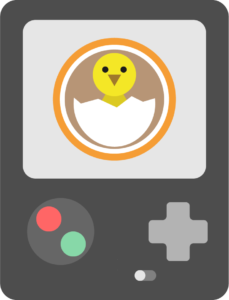Lesson 1: Eggsploring the Egg
Introduction:
These materials are designed to enhance Lesson 1: Exploring the Egg. Youth will explore the idea of life cycles as they learn about different parts of an egg.
Focus Question:
- What are the parts of an egg?
Life Skills:
- Learning to Learn
Virtual Assets
Squishy Egg
Observe how to set up and complete the Squishy Egg activity.
Lesson 2: Pick-a-Chick
Introduction:
These materials are designed to enhance Lesson 2: Pick a Chick. Youth will explore ideas of heredity as they compare and contrast different poultry breeds.
Focus Question:
- How do chicks in the same brood resemble their parents or each other? How are they different from their parents or from other chicks in the same brood?
Life Skills:
- Communicating
- Decision-making
Virtual Assets
Hen House Party
Facilitators Guide
Lesson 3: Warming Up with Eggs
Introduction:
These materials are designed to enhance Lesson 3: Warming Up with Eggs. Youth will learn the fundamentals of incubation, including the importance of heat, humidity, and turning for the developing chicks.
Focus Question:
- How can we provide ideal conditions for our chicks to grow?
Life Skills:
- Planning and Organizing
Virtual Assets
Lesson 4: Building an Eggs-Ray Viewer
Introduction:
These materials are designed to enhance Lesson 4: Building an Eggs-Ray Viewer. Youth will build and use a simple candler from everyday items.
Focus Question:
- How do farmers make sure that their chicks are developing correctly?
Life Skills:
- Relating to Others
- Cooperation
Virtual Assets
Lesson 5: Playing Peek-a-Boo with Embryos
Introduction:
These materials are designed to enhance Lesson 5: Playing Peek-a-boo with Embryos. Youth will deepen their understanding of life cycles by comparing chicken embryos at different stages of development.
Focus Question:
- How does a chick grow?
Life Skills:
- Observing
- Communicating
- Relating
Virtual Assets
From Embryo to Chick Video
Youth can join 4-H Agent Victoria Brewer in Chatham County, NC and the Livestock Conservancy to compare the parts of a fertilized and unfertilized egg. The video reviews the parts of an egg, shows how vinegar affects eggshells, and compares the internal structures in two different eggs. The end shows an embryo moving inside of a candled egg.
Candling Video
Youth can watch how an embryo grows from days 2 – 17 using this video of candled eggs.
Hatching Video
Youth can watch eggs hatching after 21 days in the incubator.
FlipGrid Prompt
If you use FlipGrid with your youth, you can ask them “What happens inside of an egg each day?” Assign youth to specific incubation days. You can decide whether to pick milestone days or to cover all 21 days of incubation. Have youth respond to the prompt as if they are the embryo. Responses should include a description of how the embryo is changing and what they expect to happen next. Youth can be creative and include the embryo’s perception of the world outside the shell.
This curriculum is produced by National 4-H and can be located at shop4-h.org. The activities on this page are designed to enhance and work with the curriculum, they are not a substitute for the book content.





